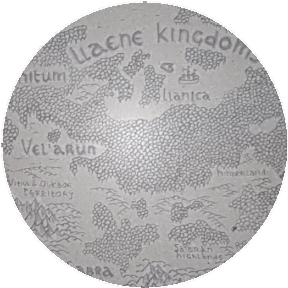
Llaene Kingdoms
Llaene Kingdoms consists of Llaene, Iconitum, Vel'arun, Astrantia and the mountain region called Sabra. The smaller regions of Linarea and Rheun are also considered a part of the Kingdom but the rule is repeatedly challenged by the locals. The western most region called Feinland is also officially treated and considered a part of the kingdom but is actually autonomous and rogue in its rule. The kingdom is ruled from the capital of Llanica, by the current Queen Llaene.
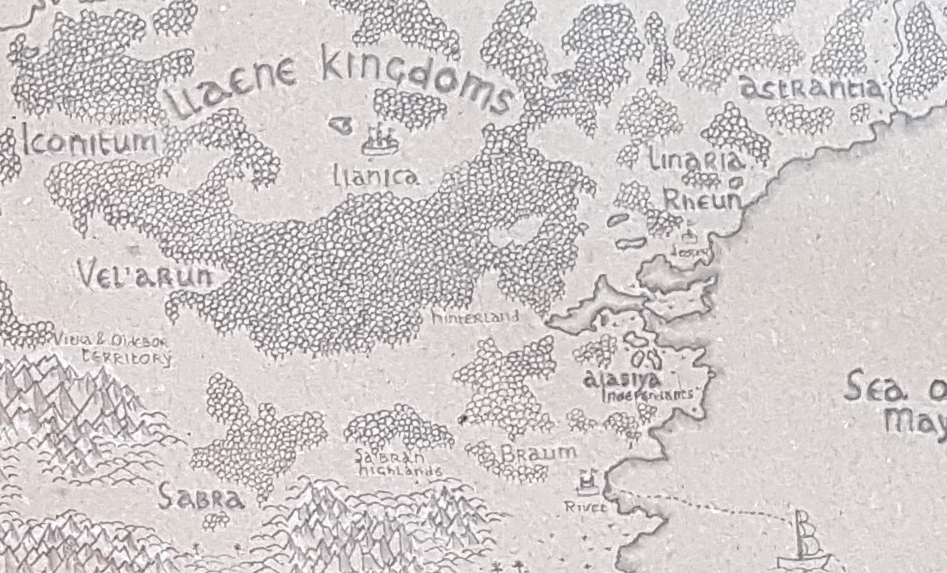
Llaene kingdoms have had 11 kings and queens since its foundation in 2145BGS. The ruler has always been named King or Queen Llaene, making it hard to estimate the exact length or their rule, and feeding life into a public myth that the king or queen was immortal. A myth that the royalty of Llaene fed and exploited, shamelessly. The kingdom is said to be ruled by the iron fist, but the truth is that the current Queen Llaene, as well as her nearest predecessors, were not particularly brutal in their rule. The rulers had always followed their own code and understood that powerful examples and lots of propaganda would make her versalles stay in line. That, and her acclaimed immortality got the job done quite well and the kingdom itself was at relative peace. The Revians in the west minded their own business, but she still kept her side of the Whispering Rapids. The river was the official border between her demesne and theirs, but the Queen had no real interest in the rough backward mountain lands, too far from her borders. Her only real enemy has always been the Elexian Emperor, in the Central Kingdoms so she maintains a major force at the foot of the Sabran Mountains, to keep her borders and continually test the region of Eastwatch and the resolve of the empire.
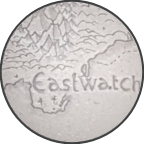
Geography: Mostly dense forest of broad leaves in the north while the south is dominated by hills, elevations and plateaus rising up into the Sabran mountains in the south western corner of the empire. To the east runs an enormous coast line jagged with fjords and bays as the land falls away to the great Sea of Mayrose.
Military: Forces on the border of Revian territory vary from 2000 to 4000 thousand mercenaries, around 500 horsemen, 200 machines of war with logistics. Most of these living in 8 garrisons and 3 outposts on the Whispering Rapids. In peace times an abundant land that gives soldiers and non military in the area plentiful lifes. There has been no real conflict on that border in 250 years. Lots of parading around to show off and even acts of provocation that would in times of more unease maybe have triggered something uglier. But in its current state of affairs the peace is solid and has been for a long time. So the eyes of Llanica focus on the south and what might crawl out the empire through Eastwatch. The kingdom monitors every move south of the Sabran mountains with scrutiny, with more than 2000 of snipers littering hilltops and mountains and 2800 mercenaries always on alert in nearby garrisons and another 1500 mercenaries with warmachines in ambush places along the western passage along the Reyn River and eastern passage along the Amassian Tributary. In line with her descendants the Queen does not allow anything to move in or out of Eastwatch without her express permission. The kingdom's other major concentration of troops in peacetime is outside and mostly to the south of Llanica waiting for any invading hordes form the Alysian independants and Hinterland. There are also major garrisons and military concentrations in Rinuncarta in Feinland, and one in the Sabran highlands. The Llaene military uses spies for a variety of purposes, mostly to infiltrate the Elexians.
Religion: Many, mostly pagan beliefs based in and around the great forests of the kingdom. There is no mainstream religion or direction from Llanica or the royalty, so local shamans, priests and spiritual individuals are free to promote all sorts of beliefs, as long as there is no disobedience towards Llanica.
Social: Llaene is somewhat an odd alliance amongst people that do not have much in common at all. The people of Iconitum and Vel'arun and Llaene herself are somewhat similar, they all make a living in and of the forest. But where the nomads of Iconitum will travel north to fish the great Lake Enusta or even as far as the North Sea, the people of Vel'arun and Llaene would never go near those windblown and freezing shores. Vel'arun are mostly hunters and gatherers while Llaene herself is all about the administration of the empire. Llaene had tight bureaucracy and rules for everything, it was like entering a completely different world coming in from the forest and seeing the smooth wonder of rule in action. Enforcement on the other hand can only be described as non-existent, as long as you didn't offend the ruler or anyone close to the ruling family while in the capital of Llanica.
Trade: Most trade goes through Astrantia and Iconitum, destined for either the Revian Alliance or trade routes off the Astrantian coast. Wood, woodwork, tools, and weapons are a major export along with furs, leatherwork and leather armour. Exotics from the jungle and wetlands travel to Llaene in return. Although the empire has always been Llaene's greatest enemy, extensive trade does take place and always has. Sometimes bypassing the borders altogether through mountain passages and sometimes via middle men facilitating anything profitable and worthwhile.
Magic:
Llaene
Llaene is the heartland of the kingdoms and the seat of the Queen is found in the capital of Llanica, a splendid city and a marvel in modern administration. Lesser royalties, the nobility and upper echelon all live within the safe confines of Llanica city walls while the commoners and lower class all live outside the city walls.
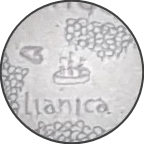
More about Llaene
Social: Llaene loves paperwork they say and for good reasons, the kingdom functions and functions well because of it. There are more than 5000 civil servants in Llanica and they have a whole citypart to themselves. The paperwork and long lines at public offices, keeps things flowing at just enough a slow pace that Llaene can keep tabs of it all. The kingdom takes it laws and rules overly serious but as soon as you leave Llarnice and the city walls behind, urban law rules. However both the taxcollectors and demand for conscripts is always honored in Llaene Kingdoms.
Geography: Llaene lies in the middle of vast broad leaved forest covering the entire region all the way from the Revian Alliance and to the coast. The capital of Llanica is placed in the midst of huge expanses of rolling plains, rich farmland that feeds Llanica and many other cities around it. In the north the forest thins and turns into coniferous trees as the land fades into the great lakes, Lake Oiko and Lake Enusta. Far to the south at the edge of the forest the land rises slightly into the more hilly areas of the Hinterlands.
Military: Forces on the border of Revian territory vary from 2000 to 4000 thousand mercenaries, around 500 horsemen, 200 machines of war with logistics. Most of these living in 8 garrisons and 3 outposts on the Whispering Rapids. To the south in the Sabran passages more than 2000 snipers litter hilltops and mountains and 2800 mercenaries always on alert in nearby garrisons and another 1500 mercenaries with warmachines in ambush places along the western passage along the Reyn River and eastern passage along the Amassian Tributary. The kingdom's other major concentration of troops in peacetime is outside and mostly to the south of Llanica waiting for any invading hordes form the Alysian independants and Hinterland, the kingdom has app 20.000 men on standby and 500 archers on constant alert along with significant cavalry.
Trade: On the record Llaene trades with its allies with the kingdoms, off the record the kingdoms will trade with anyone that has what they want, and the Llaene elite has a multitude of cravings. The farmlands products of Llaene are traded with Iconitum, Vel'arun and Sabra for everything the Llanica doesn't have. Contrary to the their main opponents the Elexians, Llaene does not indulge in or tolerate slavery. Although there are rather poorly paid farmland worker that would swear to the contrary, there is no organized slavery or trade in Llaene.
Religion: Many, mostly pagan beliefs based in and around the great forests surrounding Llanica.
Magic: None
Iconitum
The forest cities of Iconitum are a marvel unlike anything else in Ardensis, not even surpassed in beauty by the forest dwellings of Rhy'ady. One half of the populace lives stationary in these forest groves and out of reach tree fortresses, while the other half are nomads that travel north to fish the great Lake Enusta or even as far as the North Sea in the summer and return to the the forest to their winter dwellings.
More about Iconitum
Social: The people that inhabit the forest cities go by the name Ente'thak while the nomads are called Itha'thak, apparently a god of the forest divided the people and told one part to build great cities and remain and the other part to go and always be on the move. How much bearing this really has nowadays on the people of Iconitum is uncertain, but they will take offence if you get it wrong and call a city dweller Itha'thak. They are all quite friendly and sociable people with the usual disclaimer of not overstaying your welcome. They love to hear news about the world outside and what is going on in Llanica in particular. They often have great banquets where the local in charge treats the tribe, and foreigners that come to their cities when one is being held are in for a treat for the eye and the stomach alike.
Geography: Great broad leaves cover almost the entire region except in the south where the land opens up to a vast area of great rolling plains.
Military: Iconitum supplies light and heavy infantry as well as horsemen to the Llaene war effort. They arent top of the line, like the ones from Vel'arun, but Iconitum makes up for it in raw numbers. They are by the numbers the greatest contributor to the Union war machine.
Trade: Traders come from all over the union and some even as far as the Revian Alliance to trade in the great forest cities to trade fur and leather works and some local specialities not found elsewhere.
Religion: They have rich mythology encompassing multiple gods and it is shared amongst Ente and Itha but the faith is strictly oral and no known writings are known to exist about their religion. Like the folks from Vel'arun they are not fans of paperwork and writing things down.
Magic: None
Vel'arun
The people of Vel'arun are mostly hunters and gatherers, living in the great forests in Llaene. They are usually on the move but they do make camp when needed and even stay for extended periods of time should the site be favourable or the hunting unusually good. They may appear to be rather disorganised, some travelling in small bands and others in larger groups with no visible command chain, but make no mistake about it, they are quite organised when required and supply some of the best archers and horsemen in Llaene.
More about Vel'arun
Social: One should be wary of small signs in the forest, if you are in Vel'arun you need to take that literally. They communicate through tiny symbols left in nature, broken branches, innocent looking twigs that form a pattern to the trained eye and tine scratching on trees and branches, all form a rich language letting the locals chat on the wire.
Geography: Huge forests shape the heartland of Vel'arun as it rises into the Sabran mountains. The ascent into the mountains is formed by a huge hill clad area known as Vitra and Oldebor Territory. To the North the great forest traverses into Iconitum, no formel border exists or is enforced between these two forest people.
Military: Vel'arun supplies almost all of the archers and horsemen to the kingdom as well as leather armour, bows and arrows. They aren't fans of administrations, and display their utter disgust for Llaene's paperpushers by producing far more conscript and war resources than anyone else in the kingdoms, so the Queen turns her blind eye and leaves their part of the forest alone.
Trade: Not really much, most of the resources they don't use themselves goes towards the Llaene war effort. Most of their other trade goes to Sabra in the south, the kingdom's outer defence.
Religion: They have several places of sacrifice and forest groves where some of the same gods they pray to in Iconitum are praised. The Vel'arun variant appears to be centred around animalistic sacrifice and shamanistic rituals.
Magic: None
Sabra
The Sabrans are the only mountain folks in Llaene, they are also at the front of the war with the Elexian empire. Always the region in between, buffer for skirmishes and centuries of terrorism running both ways, Sabra has become hardskinned and tough over the years. The Sabrans are tasked with holding the south passes leading into Llaene from Eastwatch and the coast of the Sea of Amas, and snipers line every mountain ridge and every hillside along the Reyn River and Amassian Tributary.
More about Sabra
Social: After centuries of terror their friendliness has shrunk to almost nothing and the people of Sabra a vary of anything foreign or strange moving about in the land. Travellers through the land had best announce their arrival, ask for permission and in no way show any kind of suspicious or curious behaviour. Crossing through Sabran territory at night is a sure way to end up with arrows inside you.
Geography:
Military: Constantly prepared for attack Between 800 and 1200 snipers are spread out hilltops and mountains and other vantage points. Around 2000 mercenaries are always on alert in nearby garrisons and another 1500 mercenaries with warmachines in ambush places along the western passage along the Reyn River and eastern passage along the Amassian Tributary. Most of the population in Sabra is either military, involved with or family of the military. Whether enlisted in the land forces or the fleet there is almost nothing that goes on in this region that isn't military inspired. The current Queen Llaene believes in keeping the Elexian Empire busy, and so she generally stages skirmishes and probes of Eastwatch's defences year round. She holds fleet exercises outside Eastwatch or down the coast outside Kadus, enough to provoke yet nothing severe enough to warrant retaliation.
Trade: Mostly within the kingdoms and mostly with Vel'arun. There are no trade routes on the coast of Sabra but there are trade routes going through the region of Braum out of Rivet city. There is also some trade with the Alasiyan Independants.
Religion: Fairly uncharted, there does appear to be a mainstream religion with some similarity to the Mitran Sol cult.
Magic: None
Feinland and Astrantia
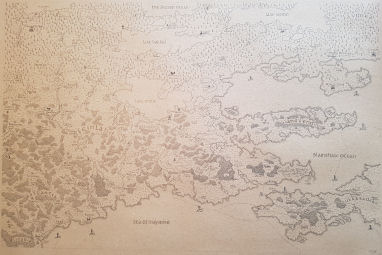
Feinland
The people of Feinland are a weater-hardened and strong people in the far north of Ardensis where only the toughest can survive. They lead nomadic lives based on lifestock hearding, fishing or both and their fur and leather works are legendary througout Ardensis. In early spring they travel north along the Blainshaw Ocean to fish the waters or bring their livestock along the Merle River or along the Eidin to graze on the shores or ranges and when the first leaves start to fall, they return to the south, in protection from the icy northern winds.
More about Feinland
The Feinlanders are humorless people that appear extremely unwelcome at first glance and second as well, they have quite a lot in common with some of the nomadic tribes of the Revian alliance, and they go by such names as Sour Revians, never spoken to their faces. They are considered directly hostile by most of their neighbors, which leave them in peace. Truth is, not much is known by these solitude tribes, most of what we know is either from the Llaene Royal annals, Lavimean folklore and gutterspeak.
Laviemean proverb:"Don't go looking for a fein, he will find you!".
From the annals of King LLaene the 2.nd, after his northern invasion campaign 1875 BGS (Royal Historian, Bernard Vennespierre)
The people of Feinland are a cowardice and unruly race, impossible to tame, impossible to invade and maintain, and undesirable in all aspects of ruling. They have no respect for ordinary war tactics or even basic conduct of war and employ guerilla tactics at all junctions of their defenses. They have no roads, but travel themselves on pathways impossible to cross for warmachines and heavy infantry, we lost many trying. The land is riddled with bogholes and invisible underground crevisses that swallow men whole, the forest are old and the moss covered ground covering deadly pifalls. We marked pits and holes with poles and strips of cloth, to aid us on our return journey, but I doubt the effect, the landscape seams to swallow most foreign objects. To all the foes in Feinland we lost most to the bogholes and natural pitfals. The Feinlanders have no central governance and appear to be acting entirely on their own schedule and accord, yet they managed to coordinate several attacks, losing many men and warmachines, and then they were gone, and yet we never managed to engage or destroy any group larger than 10. We cannot war or conquer these people when there is no vantage point or holding point, nothing that they care enough about to defend, they simply move on and come at us from a different high point. We spent 13 months in the dark forests with little visibility, swamps that the warmachines couldn't cross and freezing nights that claimed more of our soldiers than the acts of war and we gained nothing. When we finally reached Rinuncarta in the far west, there were 164 souls in the city, mostly dock workers and ships crew, not a single soldier or defensive measure protected the city and we walked straight in. Even though it was clearly a major city with housing for thousands, trade quarters and a major dock area, there was nothing to occupy, no central hold or administration we could take over. In the belief that the cowards had left when they saw us coming, and that they would eventually return, we established a small garrison and a guvnors office, to ensure cooperation from what, we still believe, is their main city. We remained in the city for almost a month establishing controls and monitoring if any Feinlanders tribes would attack or submit or even negotiate, but none came, in fact during that month most of those 164 souls in the city when we came were gone. When we left the city walls of Rinuncarta for the last time there was scant but our own garrison and administration left in the city, We assumed they would slowly seep back, after all, our spies had seen as much as 5-6 thousand souls in Rinuncarta at some point, but they also said that it varied to the extreme by seasons. So we left, not with glory, not with treasures of conquest. We lost men, too many warmachines, and I'm afraid to say so I think we also lost our soul and hopes in that stinking and foul territory. The morale of the men as we set out on our 8 month return journey for Llanica, was broken. We cannot claim conquest over the Feinlander nor can they claim conquest over us, they are a filth we tolerate because we must.
From the annals of King LLaene the 2.nd, after his northern invasion campaign 1875 BGS appears a footnote, apparently entered by the king himself and dated spring 1873 BGS
To this day, there has been no taxes collected from the Feinlanders, they haven't supplied a single hand to our conscription requirements. The only envoy we had from Rinuncarta since our return reports that all soldiers of the garrison are dead. Taken out one by one by these filthy and dishonorable monkeys. The envoy reported that all personnel of the administrative branch are completely well and unharmed, which is a surprise. But they are also completely incapable of doing anything in the way of tax collections, conscription or anything even marginally useful, with no military to enforce. The locals would agree or deny as they saw fit and even when they did seem to have some agreement the Feinlander would routinely break that agreement almost as if to show they did not care. I fear we will have little success ever with the Feinlanders.
From the annals of King LLaene the 2.nd, after his northern invasion campaign 1875 BGS appears another footnote, entered by Royal Historian, Bernard Vennespierre and dated spring 1869 BGS.
We received a rather unusual guest today, a Feinlander tribesman claiming to speak for the major families, frankly a claim that anyone could make and his clothing was as scruffy looking as all other Feinlanders. Nevertheless, we chose faith and spoke to the so-called leader at length. The tribesmen had all gathered and had come to the agreement that being a part of Llaene Kingdoms was probably not such a bad idea. When we asked how many tribesmen were willing to agree to his, his answer seemed to include everyone but he wasn't specific in any way, when we asked how many, he simply answered, enough to matter. What they had agreed amongst themselves is that they needed no protection, they were perfectly capable, but they needed to be a part Llaene, they needed an alliance. More by name then by gain. There were raiding parties coming in from Lavimea, that didn't care about warfare or conquest, they plundered, burned and slaughtered the families and moved on, this has put a scare into the Feinlanders. They wanted in and they wanted a month long and very loud celebration of their entry into the kingdom, to show the Lavimean hordes they were now fighting a bigger enemy. They also agreed to have the Garrison re-establish, command staff from LLaene and with their own volunteer conscripts, they could not force a familie to enlist a member but some young men sometimes sought away from familie trying to carve their own way and amongst those there would be a good many willing to enlist. They have agreed that a garrison of no less than 1000 men shall be established within 2 years. The Feinlander don't seem to understand what taxes are, but they have agreed to a biannual tribute being paid to the Kingdom, but it wasn't exactly clear what the tribute would consist of. There seems to be a 7 years schedule in which availability of fish, meat, fur and dried goods vary. What we understood after a great deal of explaining was that in year 1 and 2, we would receive mainly fish and some dried goods. In year 3 it would be meat and furs. In year 4 and 5, fish and fur. In year 6, meat and dried goods. Year seven, as we understood, would be a mixed shipment including tools and weapons. The agreement will be brought to official signing in a few days, when the Counselor Forum has agreed to it.
From the annals of King LLaene the 2.nd, The Invasion of Feinland 1868 BGS (Royal Historian, Bernard Vennespierre)
It is a proud day for the Kingdom, the tribes of Feinland have finally surrendered and entered into a pact with our Majesty King LLaene the Second, untowards whom they have sworn to be loyal versalles of his rule. It is a fine inclusion into the kingdom and a 6 week long celebration of the pact and the kingdom is to take place in the Feinlander cities of Rinuncarte and Ramos Kic'aci starting today. It shall be a glorious display of the kings banners and the Llane warshield through these two cities and banquets and night long dancing, to let the world know that Llane and Feinland are now one and that the people of Llanica stand with the people of Rinuncarte and Ramos Kic'adi.
A religious book out of Lavimea, probably a priest guide or similar, has several passages describing the Feinlander. The book, goes on at length, about the pagan beliefs and traditions of the Feinlanders and the dark places that are a part of their lives, although no exact clues are given to the nature or locations of such darkness. Most of the book is one long undetailed and imprecise rambling warning to its reader, not to go there, avoid the Feinlander. A certain passage speaks of the Feinlanders and the way they communicate, just about the only insightful place in the book. The author is unknown.
The Feinlanders travels most often in smaller groups counting no more than 20 heads and it has so far been a mystery if and how they communicate which each other. Is the madness somehow coordinated or just chaos and anarchy, recent discoveries indicate that they do indeed communicate maybe more detailed than hitherto believed. Apparently the main points of messaging are their campsites, it is believed that they leave notes and instructions to other families about where they came from, how long they stayed here and where they are going next. The markings we have found contained much more detailed information, very little that we understand. There seems to be an element of reporting how the season went, markings along moon phases seems to indicate how and maybe also where the fishing was good. Same things for hunting and other gathering skills. In a single campsite markings from more than 12 families was found, containing a wealth of information only the secretive Feinlanders can understand.
A long detailed list of family movements in and out of Rinnuncarta, recorded by the Llaene Commander, Liuetenant Elton Savalle, of the Rinnuncarta Garrison in 1842 BGS
Command summary: These recording has been completed over an interval of 10 years, and detail family names and movements in and out of Rinuncarta. There has been as much as 130 families, and as little as 2, in and around Rinnuncarta, in the interval of these recordings. We cannot perceive any patterns in the families coming and going and there appears to be only 5-6 families that visit Rinnuncarta on a yearly basis. Those families are known to us as: Koskinen (16 members), Jaarvinen (app. 30 members), Makinen (12-14 members), Kallio (app 20 members), Kauppi (app 15 members) and Laine(large group of 40 or more, possible this is two families). The Feinlanders in transit appear more than willing to give away family names but not much else, they rarely divulge where they have been or where they are going next. On more than one occasion we have noticed that when we talk about one family to another family using the names we have been given, they appear confused at first not understanding who or what we are talking about. It could be a pronounciatin problem, but, I swear, sometimes it feels like they are having us on, one big collective joke. In below tables we have detailed all family in and out of Rinuncarta, in cases where they wouldn't give family names they have been counted in the unknown category, these cases account for a fourth of the families. Other than the families mentioned above no other family appears twice in the interval of these recordings.
Other things we know about the Feinlander:
They are grouped in tribes based on families with strong genetic bonds and somewhat inbred over the passing of time. One family sticks to itself and its own schedule with no apparent coordination despite this the families don't get in the way or war with each other. Chance meetings in the wild between families, sometimes decades apart, usually causes no conflict, in fact, if you were watching them, you would have second thoughts of their chilling nature and stone cold facades.
They apparently follow a seven year cycle in their lifestyle where the route they take north a back varies depending on the year cycle. Sometimes they focus more on processing animal skin into fur and bones into tools and at other times they focus on procuring only. Each family follows a pattern only they know a pattern handed down through generations and formed by their collective knowledge.
Due to their nomadic nature there aren't many cities or roads to travel to them and as close as they are in their tribe or family their abhor gatherings. There are cities and even major ones like Rinuncarta that host many tribes and families together, but only as a means of trade and worship. The families leave quickly after sorting their businesses. There are a few landbased trade routes taking large caravans to LLaene Kingdoms and carrying trade to to Astrantia as well as the kingdoms biannual tribute. There are also few marine trade routes in and out of Feinland, and trade with both Lukka Kadesh and Lavimea does happen on a regular basis.
Social: There are no real cities besides Rinuncarta and Kic'adi but a number of mjor camp sites not really villages, there are no permanent residents. But at these major campsites one may find several families teaming up and working together and even occaisionally socializing outside the family. A way to share stories in deeper detail perhaps, certainly a way to share knowledge and infuse the familytree with new blood. Other than that the family is their social circle at all times
Geography: The land is completely flat but deceivingly dangerous. Bogholes and underground caves litter the landscape, and there are only few paths that allows year around travel. The forests are old in the north as well as the south, and mosscovered underground gives away to underground caves or just uneven footing, real bone breakers. Feinland is an alltogether hazardous place to travel, many areas flood several times in the year, trapping everything on islands, and getting caught is sure recipee for death. The Feinlanders know when and were to move based on the season and the seven year cycle they follow, they also know when to sit tight and hole up. The land is in part formed by the strong winds blowing from the northern ranges, which collides with warmer weather from the Blainshaw Ocean creating weather of gale force winds and lots of rain, sleet,snow and blizzards depending on the season.To make things even worse hurricanes and other miserable weather forms blows in from the Sea of Mayrose, travelling over Land's End picking up speed and nastyness before it enters the heartland of Feinland. There sun is no frequent visitor in Feinland, and is said that if the Feinlanders mood won't get you, the weather will. The Feinlander themselves have learned to live with the rough wheater they are indeed a hardened people, formed through the centuries by the harsh and unforgiving land that they live of. But make no mistake the land is giving and forgiving to those that know how, and the Feinlanders have that know how, they are born into it, passed down to generation after generation by the close bonds of the family around the campfire at night. The great pine forests of the north are rich with game and predators, while the open plains and marshes near the great lakes provides rich grazing opportunities for the Feinlanders heards.
Military: None of their own. The Garrison outside Rinuncarta is the only known military stronghold, boasting nearly 1000 men, most of them mercenaries. That regions is also home to a few of the extreme rare real roads in Feinland.
Trade: Not exactly known for their trade or trade routes but there are some. Trade out of Feinland happens from Ikina and Taita, and traders coming in to set up stations and shops arrive in Kantsis and Rinuncarta.
Religion: There are no known faiths or welldescibed belief system. Religious scholars from Astranatia claim, that they perform complex shamanistic element aspected rituals, but none of this is confirmed in the camp writings or found in any books.
Magic: There isn't much magic left in Ardensis, most of it trampled by men and their business, but in the region of Feinland there are quite a bit of old mystical places left, places better left alone. Places where, if you stray to far off the path or venture too far in a cave, you may encounter old and ancient magical beings. There are still many portals and entries to the magical and realms and even some into the ethereal realms in Feinland. In some you encounter terribly fanged monsters and in some, kind but deceitful spellweavers and sometimes you happen across a genuinely nice being willing to help, but going out looking for them, to hope for help, would be folly. Feinlanders have enormous respect for these places of magic and either they completely avoid them or they use them for places of worship. Every family have there their own rituals, their own tales passed down about places not to set foot and places to sanctify, but as a common rule they don't mess with those places, no matter the family name. There was one recent event, involving a magical summoning in an old and evil place in the woods of the giant pines near Lake Rakkas, but it was caused by an outsider, a mage from the Sisters of Tamirix, and not the Feinlanders doing.
Land's End
Land's End is a part of Feinland, not really anything at all. There aren't many people and only two places of real notice to humans. Although the land is fairly rich in resources, no one, not even the Feinlanders linger in Land's End more than they have to.
In the spring most of the peninsula turns into frozen slush and soggy marsh making travel on anything but horseback a pain. With the arrival of summer a hot stream from the Sea of Mayrose meets with a cold stream from the Blainshaw Ocean turning the place into a howling hurricane area. With autumn comes strong icy winds from the north, constant howling winds that go through marrow and bone, a friendly warning of the winther that is even more brutal. When the last covers of the forest fall and only the naked landscape stands against the howling winds from the frozen Blainshaw Ocean the land turns beautiful but deadly, and only those who hunker up for the season inside the safety of houses have a chance to see the next spring. But there are residents of Land's End, extra hardened Feinlanders who have learned to live with the extreme weather and harsh conditions. Most notably the major trade hub in Kantsis where traders from Lavimea and Lukka Kadesh arrive to set up shops or tradestations. They carry metal works and exotix spices and trade the Feinlanders for fur and leatherwork. In kantsis and Ollu the trade is rich enough and rewards large enough so families are willing to take the risk and suffer Land’s End but they usually leave the peninsula when their business is done, most can’t wait to get home.
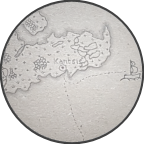
More about Land's End
Social: Both Kantsis and Ollu are trading towns by nature and see a lot of foreigners, and taverns and inns are the only sensible place to hole up when Land's End is at its worst and business is slow. But other than the city life of these two hub the region is utterly dead. Tribes fom Feinland, get their busines sorted in the cities and travel quickly back to the heartland. The weather is too nasty and nature is too rugged to sustain any kind of sane life even by the stands of the Feinlanders.
Geography: The land of thousand lakes and 100 rivers. The landscape is seamingly flat but yet forever changing and impacted by the regions rough weather. Wetlands and flood area are unstable and move around the peninsula depending on the season. Morest of the forest is mangroove that is frozen most of the winter season and flooded in the summer and autumn.
Military: Land's End officially belongs to Feinland and thus under the protection of Llaene, they do not supply military conscript nor do they have any forces of their own. Lavimean hordes have been known to raid Kantsis and Ollu from the sea, but their pillage was so small that they often did not return for a long time, there were fatter picking along the coast than Land's End.
Trade: The essense of human presence on the peninsula is all about trade. The ships out of Kantsis and Ollu carries goods to Lukka Kadesh and into the frindlier parts of the Lavimean heartland, while traderships carries their own goods into Feinland.
Religion: None
Astrantia
The people of Astrantia are seemingly light minded, forthcoming and friendly people. Their appearances can be very persuasive and seem pure but their friendliness is simply a facade for a "Our door is always open, but leave your money pouch at the door, because you're leaving without it." policy. They aren't robbers or in any way unreasonable in their nature but their company, bars, taverns and brothels will leave you broke if you linger.
They are first and most business men, and not unaware that people come back and the fact that the current Queen Llaene had so far been incorruptible to anything they had to offer, so they are well behaved business men. No point in upsetting returning clients, and certainly no point in aggravating her Majesty, rumour in Astrantia had her pegged as one prone to tantrum fits and summary execution. The powers in control of the region understood the value of bribes and displays of loyalty, but they failed to deliver on Llaene requirements for conscripts. Instead they made an agreement to pay more in taxes and a quarterly tribute to the kingdom, in return they would not have to conscript at all. Llaene won on both accounts, first of all they hadn't really any need for conscript right now, it was just standard policy and no matter how irrelevant or useless those displays of Loyalty had been to the Kings and Queen and Llaene, it still had helped build up Astrantian favour, everyone loves worship even when it’s fake. Most Kings and Queens of the kingdom were quite capable of seeing the empty bravado of the Astrantians, but its value in the public propaganda was something that could not be ignored. So Astrantia is favoured in LLaene, they intend to keep it that way and ensure that the kingdom doesn't look too hard at their dealings, or tightens its control over Astrantia further, after all they are defenceless.
Astrantia was one of the first regions to simply sign up with the first King Llaene, no conquest necessary, no war or invasion or even threats were made, before the Astrantians showed up on the doorstep to Llanica to literally beg for inclusion into the kingdom. For centuries they had been raided and razed by the crazy hordes of Hinterlands and the Alysian Independants, just like their neighbours in Linaria and Rheun. But rather than defending themselves, they scrambled along with hired helps or bribes and when the first King emerged in Llanica, they ran to Llaene for help without hesitation. It is easy to judge them and maybe point out their cowardice, the truth is they simply weren't any good warriors amongst them, no training, no conscription and they had no military history whatsoever and they never got the peace of raiding parties to establish much or rebuild anything. Up to their inclusion into the kingdom they had survived simply by being the furthest away region for the hordes, but now the raiding parties found little loot in Linaria and Rheun, they had finally learned to efficiently defend themselves, and they came further north for easier pickings. The Llaene Kingdom itself was quite pleased at the offer made by Astrantia, gaining them access to the oceans, trade routes, new goods from the Lavimean and Lukka Kadesh Trade routes and very importantly, a spearhead into Feinland.
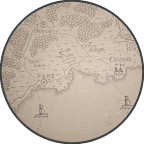
More about Astrantia
Social: Your are always welcome in any of the cities in Astrantia or at least as long as you coin purse will sustain you and as long as you show willingness to spend said coins.
Geography: Not only is Astrantia favoured by Llaene, the place also seems favoured by the weather gods and has some of the most tempered and lovely weather in the kingdoms. Nobility as well as the royalty from the kingdom often travel to become winther residents in their Astrantion estates or go there in the summer to relax and socialise, gamble or get laid, Astrantia has something for every fancy. Favoured by a steady warm stream in the Sea of Mayrose, the weather is stable and rarely drops below zero even in the deepest of wither. The lands are mostly flat with few hill areas and accompanying valleys. Most of the region is dominated by enormous forests spanning thousands of square miles but most of it is friendly and open, and what isn't open the Astrantians don't mind taking with the axe. In fact the only war they ever fought and lost was against the wood, yet they remain hellbent on cutting it down. They incidentally also sell a lot of oak, beech and larch to Lukka Kadesh, in short supply for their warmachines.
Military: Astrantia consequentially fails on delivering concripts or any else usefull to the war machine which they make up for in taxes.
Trade: Best place to find and barter for a good deal in the kingdoms. There is no end to the exotics money can buy you in Astrantia, if they don't have what you need in one shop just go to the next shop is the saying.
Religion: There are a host of religious factions, most are found in the major cities. Most of them are frankly, just outright scams, designed to lure travelling believers in and tempt those in need of belief. Some try to enslave their believers for life while others focus one sucking people dry as fast as possible and moving on. There is no mainstream religion and the common Astrantians citizens don’t care and have no patience for religious matters other than those that can be used for exploitation or power.
Linaria and Rheun
The people of these two regions are very similar, maybe even once founded by a single family or tribe. Their exact origin is unknown, but they show strong similarities in physique and somewhat in appearance. Most of the populace are stronghold families living in and protecting themselves within strong stone castles, often built into rock formations making them impenetrable and hard to invade.
The Linarians live by strict warrior code and military rank is the only coinage of power here. They can take on the hordes from the Alysians Independants and Hinterlands and they are constantly prepared for skirmishes and primed for war. Although each stronghold stands on its own as an autonomous state. They have a unique communications system using bonfires and smoke signals that lets them talk to other strongholds and even execute a coordinated attack should an enemy be too strong for just one stronghold. There is no single Warlord or line of command in neither Linaria nor Rheun, but each tribe is led by a single Warlord, none of these would admit a single ounce of victory or defeat to each other, but they came to each other's help when requested.
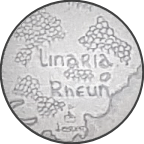
More about Linaria and Rheun
Social: Across the strongholds there is little socialising the communications are strictly military or inteligence, not for chit chat. Some inter marriages take place but mostly each shonghold family or clan keeps to itself. Within the stronghold the families appear to very tight knitted and fond of each other. Strangers coming to their gates politely knowcking will find them quite friendly and hospitable as long as you don't overstay your welcome.
Geography: Large forest covers the mainland fading into alomst naked shoreline along the coast to the Sea of Mayrose. The land is mostly flat but unusually thin soil, in some areas, exposes hard bedrock that is used in stronghold construction.
Military: The two regions have no military forces other than what is inside each stronghold. On the other hand everyone, young an old, female or male is a warrior, and although their is no apparent coordination they have shown again that they can repell most attacker on their doorsteps, if not that then they can dig in deep in their stronghold and hold them. Shifting clan leaders have delivered conscripts to Llaene honouring the kingdoms, while other ignore Llaene existence entirely.
Trade: There is known trade amongst the strongholds, some spontane some on a more regular basis. There are no trade routes out of neither Linaria nor Rheun but traders come to the area, to trade weapons and armor for exotics from the jungle and metals from the mountains. Some of the finest armory work in Ardensis comes from Linaria and Rheun.
Religion: Quite a bit of the stronghold clans have local deities, usually gods or goddeses of war and conflict, but there is no shared religion or faith.